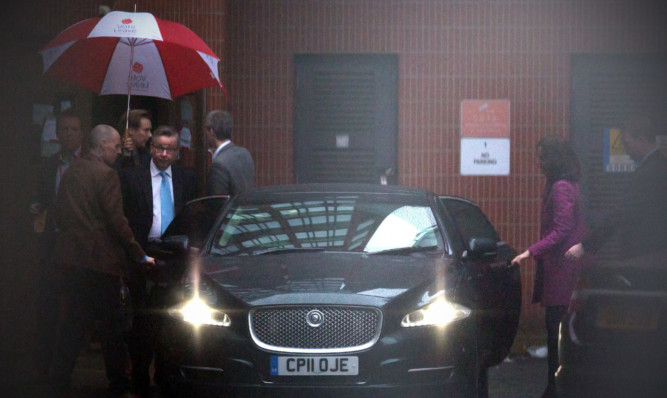Five Cabinet ministers have declared they will campaign to leave the European Union – despite a stark warning from David Cameron that an “out” vote would be a “leap in the dark”.
As expected, Michael Gove, Iain Duncan Smith, Chris Grayling, Theresa Villiers and John Whittingdale – plus Priti Patel, who is not a full Cabinet member but attends meetings – confirmed they would be in the “out” camp during an extraordinary Saturday morning meeting of the ministerial top team.
Emerging on to the steps of Downing Street following the meeting, Mr Cameron confirmed that while the Cabinet had backed his reform package, individual ministers would be given the freedom to campaign on either side in the forthcoming referendum, to be held on June 23.
“The choice is in your hands,” the Prime Minister said, in a direct appeal to voters. “But my recommendation is clear.
“I believe that Britain will be safer, stronger and better off by remaining in a reformed European Union.”
Following his return overnight from his marathon negotiating session, the Prime Minister said that leaving the EU would threaten Britain’s “economic and national security”.
“Those who want to leave Europe cannot tell you if British businesses would be able to access Europe’s free trade single market, or if working people’s jobs are safe, or how much prices would rise. All they’re offering is a risk at a time of uncertainty – a leap in the dark,” he said.
The meeting went on for more than two hours as every minister present was given the chance to speak and declare their position.
Afterwards, the six “outers” headed straight to the headquarters of the Vote Leave campaign, where they were photographed together with a poster proclaiming: “Let’s take back control.”
In a statement, Mr Gove said it was “the most difficult decision of my political life” to disagree with Mr Cameron, but that he had to be true to his principles.
“This chance may never come again in our lifetimes, which is why I will be true to my principles and take the opportunity this referendum provides to leave an EU mired in the past, and embrace a better future,” he said.
For Mr Cameron there was relief that there were no last-minute additions to the list of “outers”, whose names had all been well-trailed in advance.
All eyes will now turn to Boris Johnson, who is expected to announce on Sunday which way he will go.
Among the possible wavers who came out in favour of an “in” vote were Business Secretary Sajid Javid, Attorney General Jeremy Wright and deputy Conservative Party chairman Rob Halfon.
From outside the Cabinet, Energy Minister Andrea Leadsom said she would be backing Brexit, and further middle-ranking and junior ministers were expected to follow suit.
Earlier, Chancellor George Osborne said the reform negotiated by Mr Cameron “addressed the major concerns that many people have had” about the EU.
However, Eurosceptics – including many Conservatives – dismissed the package as meaningless and said only withdrawal could restore sufficient powers to the country from Brussels.
Labour leader Jeremy Corbyn, while confirming the Opposition would campaign for an “in” vote, said the renegotiation was a “missed opportunity”.
“We will be campaigning to keep Britain in Europe in the coming referendum, regardless of David Cameron’s tinkering, because it brings investment, jobs and protection for British workers and consumers,” he said.
Ukip leader Nigel Farage dismissed the “truly pathetic deal” and urged voters to seize the “golden opportunity” to show that Britain would be better off being fully independent of Brussels.
The new deal will allow host nations to cut migrants’ child benefit payments for children living overseas to the rate paid in their home countries – usually far lower than those received by UK parents.
A compromise will allow existing claimants to carry on receiving child benefit in full for offspring living overseas until 2020, and all member states will then be able to pay them at the rate of their home country.
It falls well short of the outright ban on sending child benefit abroad initially demanded by Mr Cameron, and marks a compromise with eastern European states who had insisted that existing claimants should continue to receive the full payment until their sons and daughters reach adulthood.
An “emergency brake” on in-work welfare payments for future migrant workers will be made available for seven years – with no option for extensions – in cases where member states are facing excessive strain from new arrivals.
The seven-year period is shorter than the 13 years put forward by Mr Cameron in negotiations, but considerably longer than eastern European nations had argued for.
The new deal also says EU treaties will be amended to state explicitly that references to the requirement to seek ever-closer union “do not apply to the United Kingdom”.
